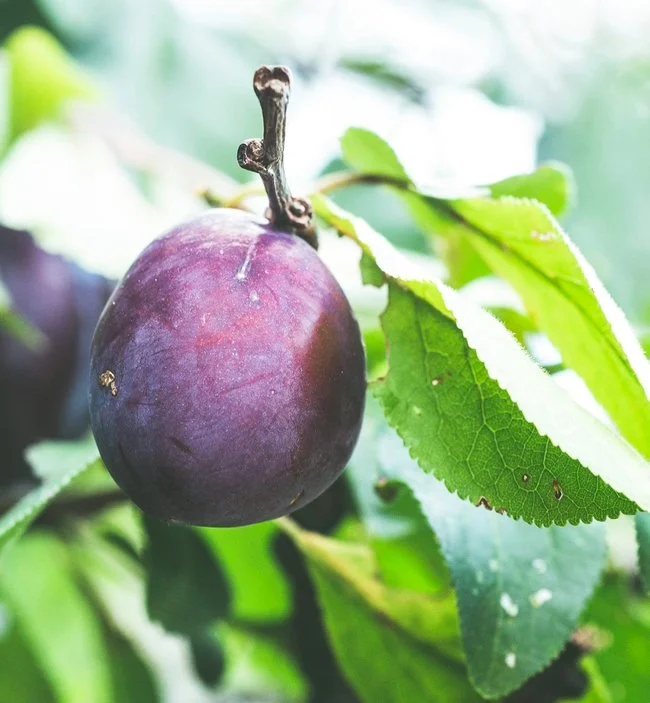Growing a plum tree from a seedling requires careful planning and care to ensure it thrives. Here's a comprehensive guide:
🌱 How to Grow a Plum Tree from a Seedling
1. Choosing the Right Location
Sunlight: Full sun (at least 6–8 hours per day).
Soil: Well-draining, loamy soil with pH between 5.5 and 6.5.
Space: Allow at least 15–20 feet between standard-sized plum trees, or 10–15 feet for dwarf varieties.
2. Planting the Seedling
Best Time to Plant: Late winter or early spring while the tree is still dormant.
Steps:
Dig a Hole: About twice as wide and the same depth as the root ball.
Remove the Seedling: Gently take it out of its pot, loosen the roots if tightly bound.
Plant: Place the tree so the top of the root ball is level with the surrounding soil.
Backfill: Use the native soil, gently tamping it down to remove air pockets.
Water: Water thoroughly after planting.
3. Watering
Initial Period: Water deeply 1–2 times per week for the first few months.
After Establishment: Once established (after 1 year), water during dry spells. Avoid overwatering.
4. Mulching
Apply a 2–3 inch layer of mulch around the base (keeping it 2–3 inches from the trunk) to:
Retain moisture
Suppress weeds
Moderate soil temperature
5. Fertilizing
First Year: Avoid heavy fertilizing; a light application of balanced fertilizer (10-10-10) in spring is enough.
Following Years: Apply balanced fertilizer in early spring and again in mid-summer if needed.
6. Pruning
When: Late winter or early spring (while dormant).
Purpose:
Remove dead, diseased, or crossing branches.
Promote an open canopy for better air circulation and light penetration.
7. Pest & Disease Management
Common issues: aphids, plum curculio, fungal diseases (brown rot, leaf curl).
Preventive tips:
Prune for air circulation
Remove fallen fruit and leaves
Use horticultural oils or insecticidal soap if needed
8. Pollination
Some plum varieties are self-fertile (e.g., European types like 'Stanley'), while others (especially Japanese varieties) require a pollination partner.
Tip: Plant a compatible variety nearby if cross-pollination is needed.
9. Harvesting
Typically 3–6 years after planting, depending on the variety and growing conditions.
Plums are ready when they are fully colored and slightly soft to the touch.


